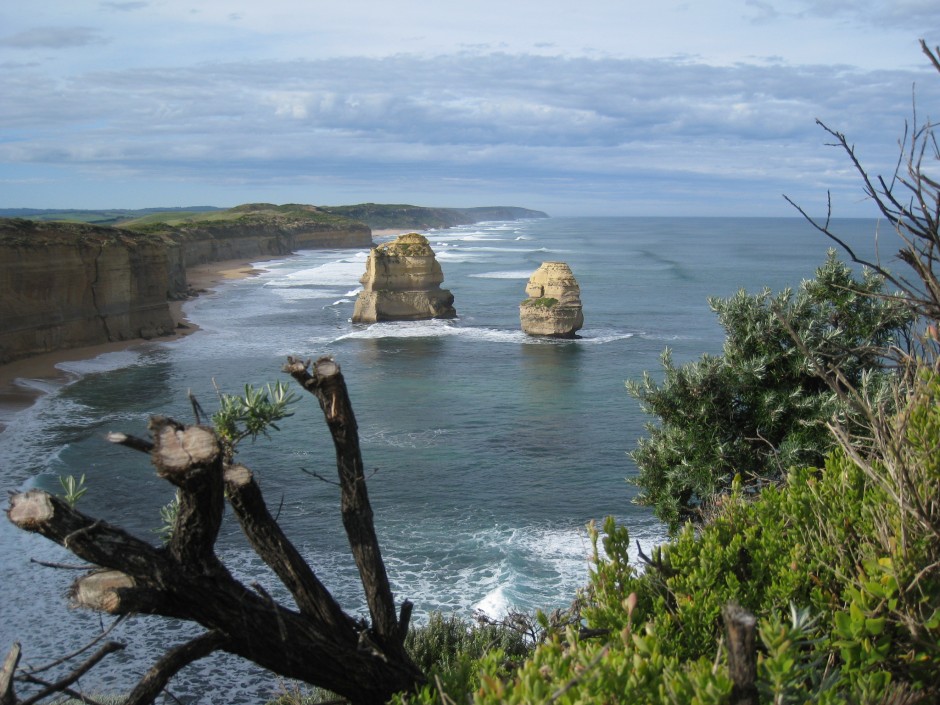
The 12 Apostles along the Great Ocean Road by Fabien Darrouzet, distributed by EGU under a Creative Commons licence.
Tucked between the rough Southern Ocean and stunning cliff tops, Australia’s Great Ocean Road is one of the world’s most scenic routes. The 243-kilometre stretch of road along the country’s south-eastern coastline is surrounded by beautiful beaches, lush rainforests, as well as incredible geological formations. The 12 Apostles, stacks of rocks located in the Port Campbell National Park, are one of the highlights of the route.
Two of these structures are visible in this wild scene captured by Fabien Darrouzet of the Belgian Institute for Space Aeronomy in Brussels. He took this picture in June 2011 while travelling in Australia before the XXV General Assembly of the International Union of Geodesy and Geophysics in Melbourne.
“Those stacks are composed by miocene limestone rock, and were formed by erosion,” Fabien explains. “The Southern Ocean gradually eroded the soft limestone of the coast to form caves in the cliffs, which then became arches, which in turn collapsed, leaving rock stacks up to 45 metres high.”
The wild Southern Ocean with its rough waves is still shaping these rock formations. “Due to the strong waves in this area, those stacks are susceptible to more erosion, and can even collapse, as one did in July 2005,” Fabien says. “This means these geoscience elements are in constant evolution, and they show the changes of nature due to nature itself.”
Imaggeo is the online open access geosciences image repository of the European Geosciences Union. Every geoscientist who is an amateur photographer (but also other people) can submit their images to this repository. Being open access, it can be used by scientists for their presentations or publications as well as by the press. If you submit your images to imaggeo, you retain full rights of use, since they are licenced and distributed by EGU under a Creative Commons licence.
